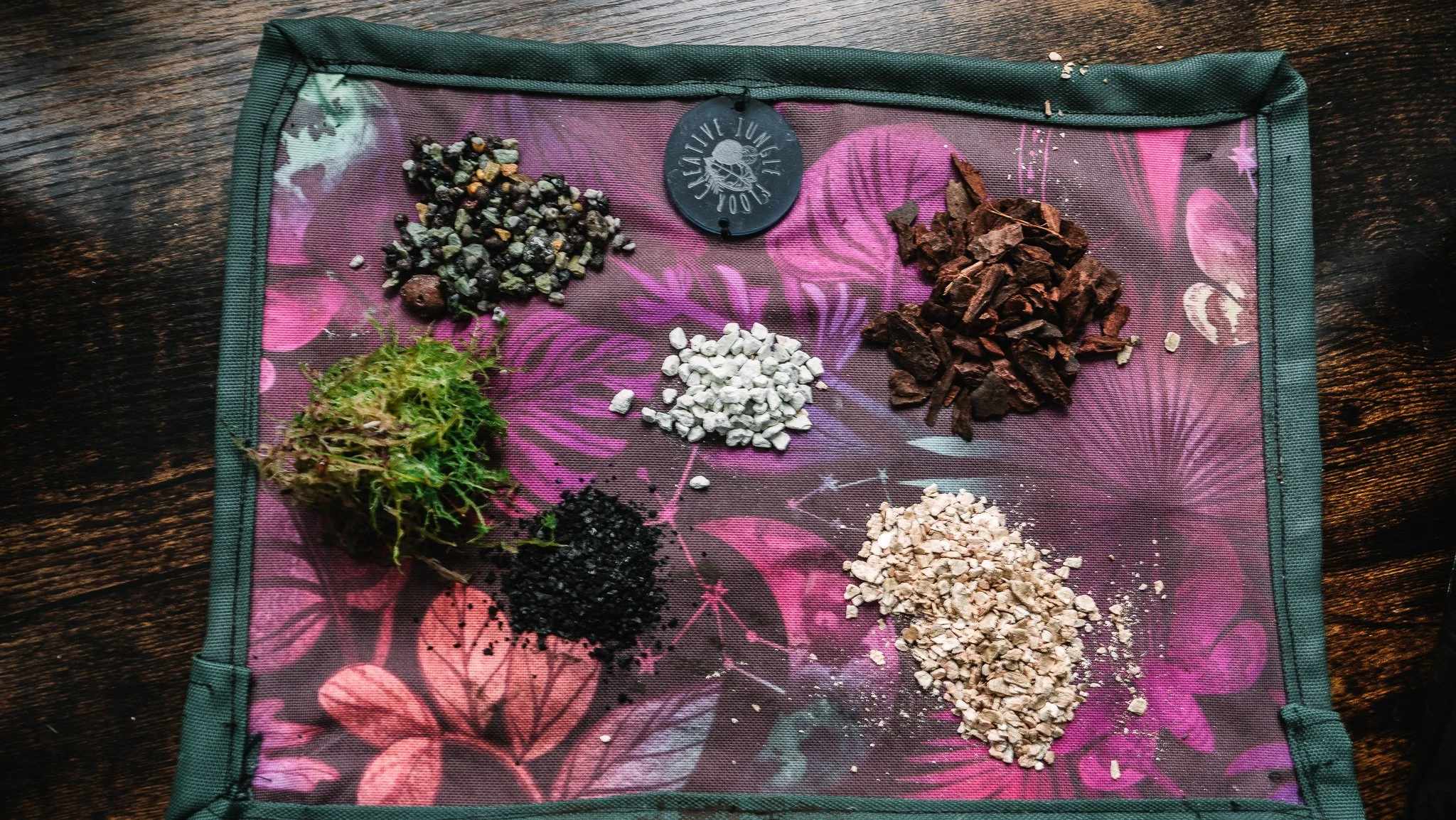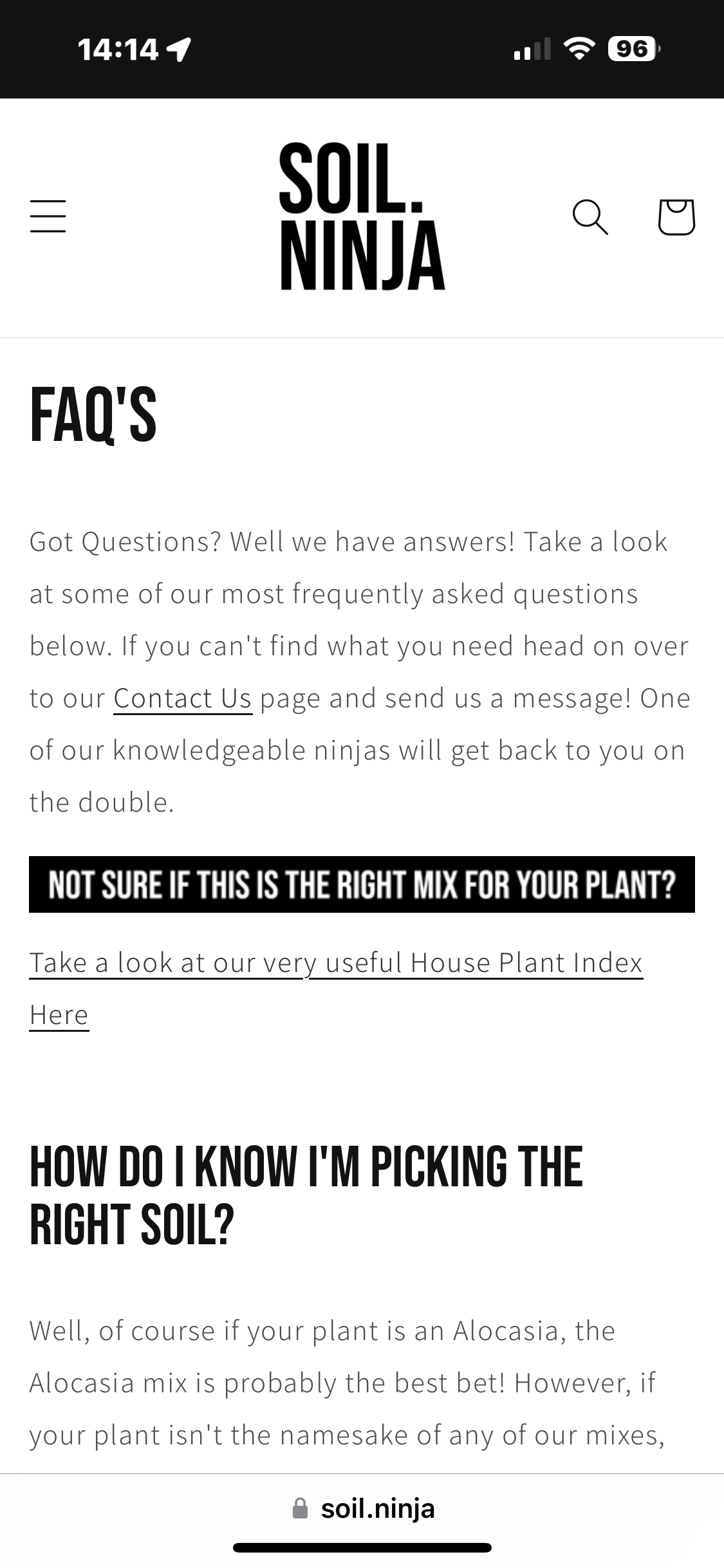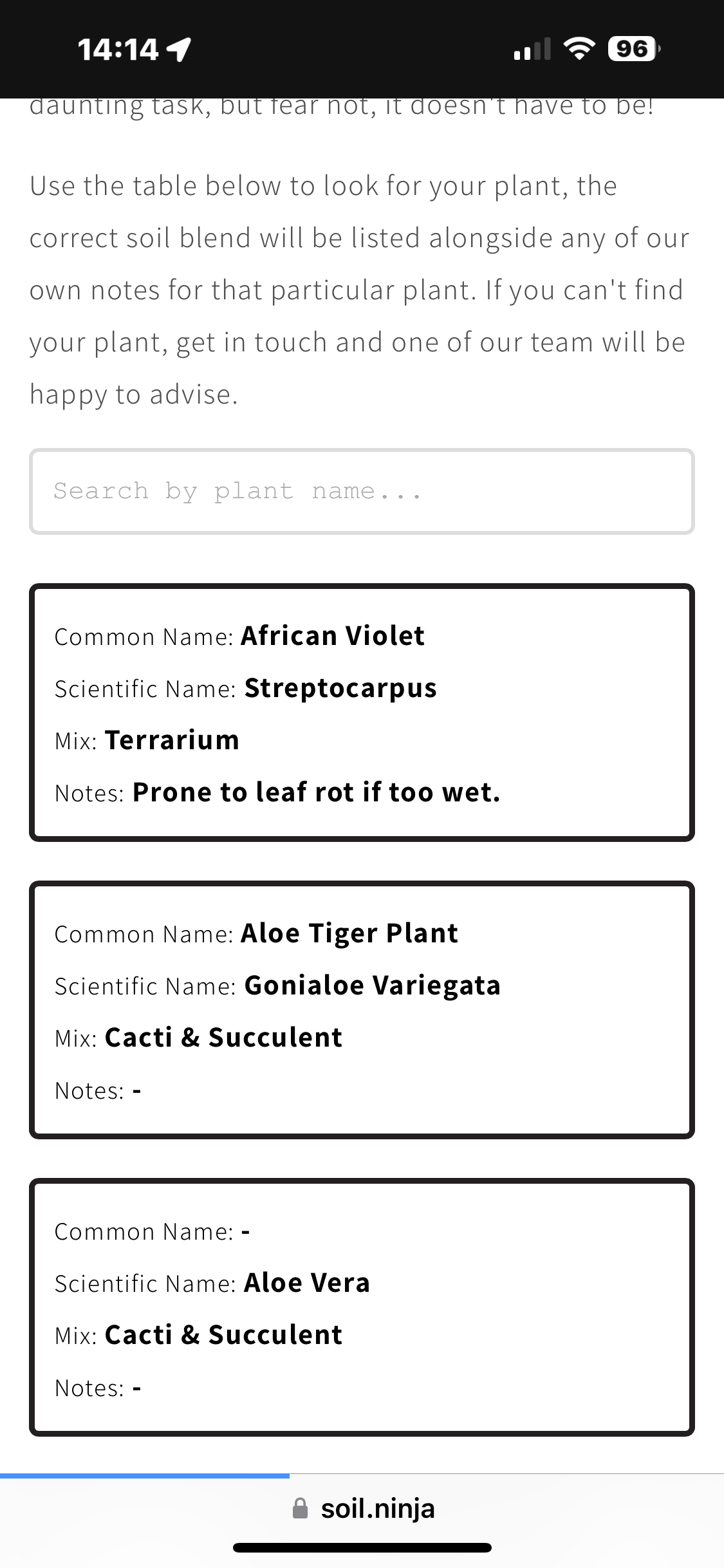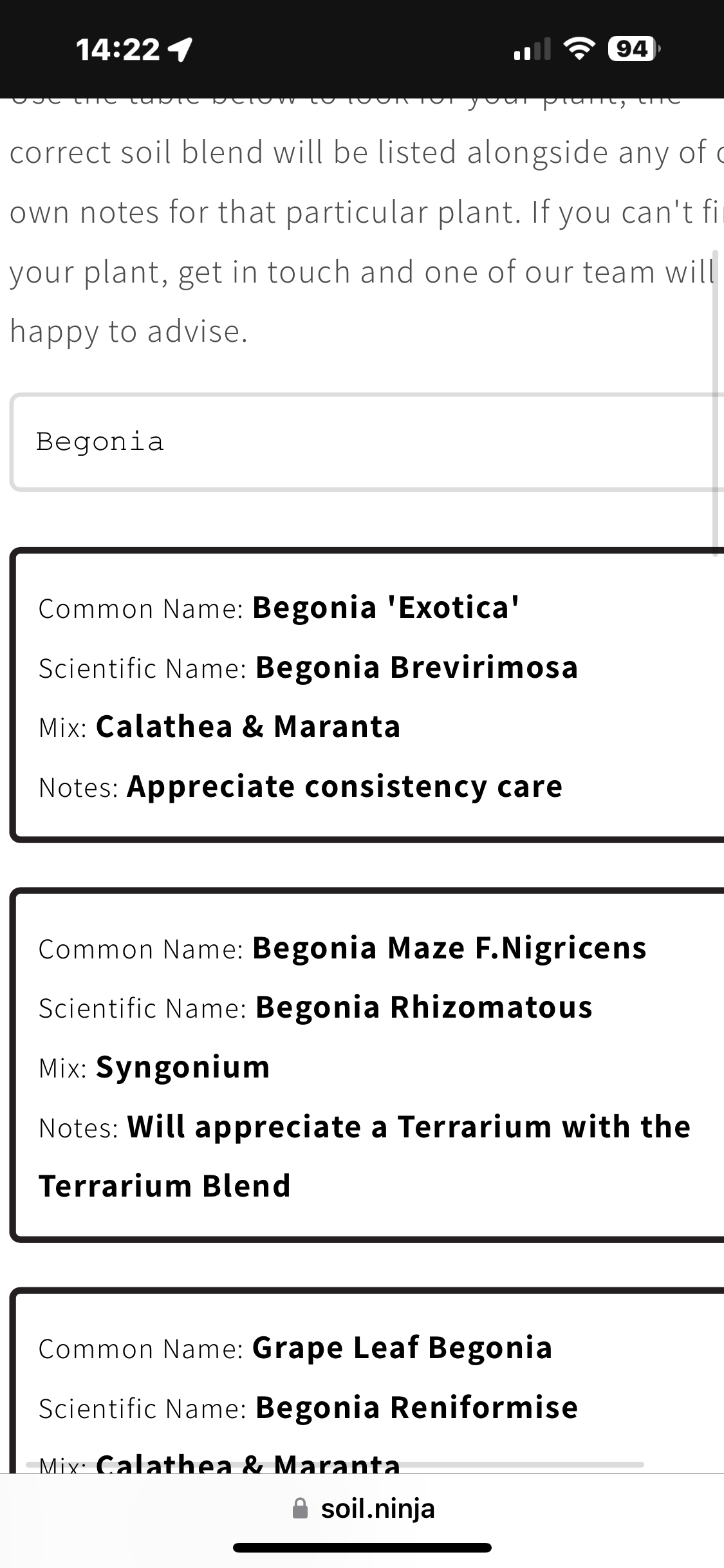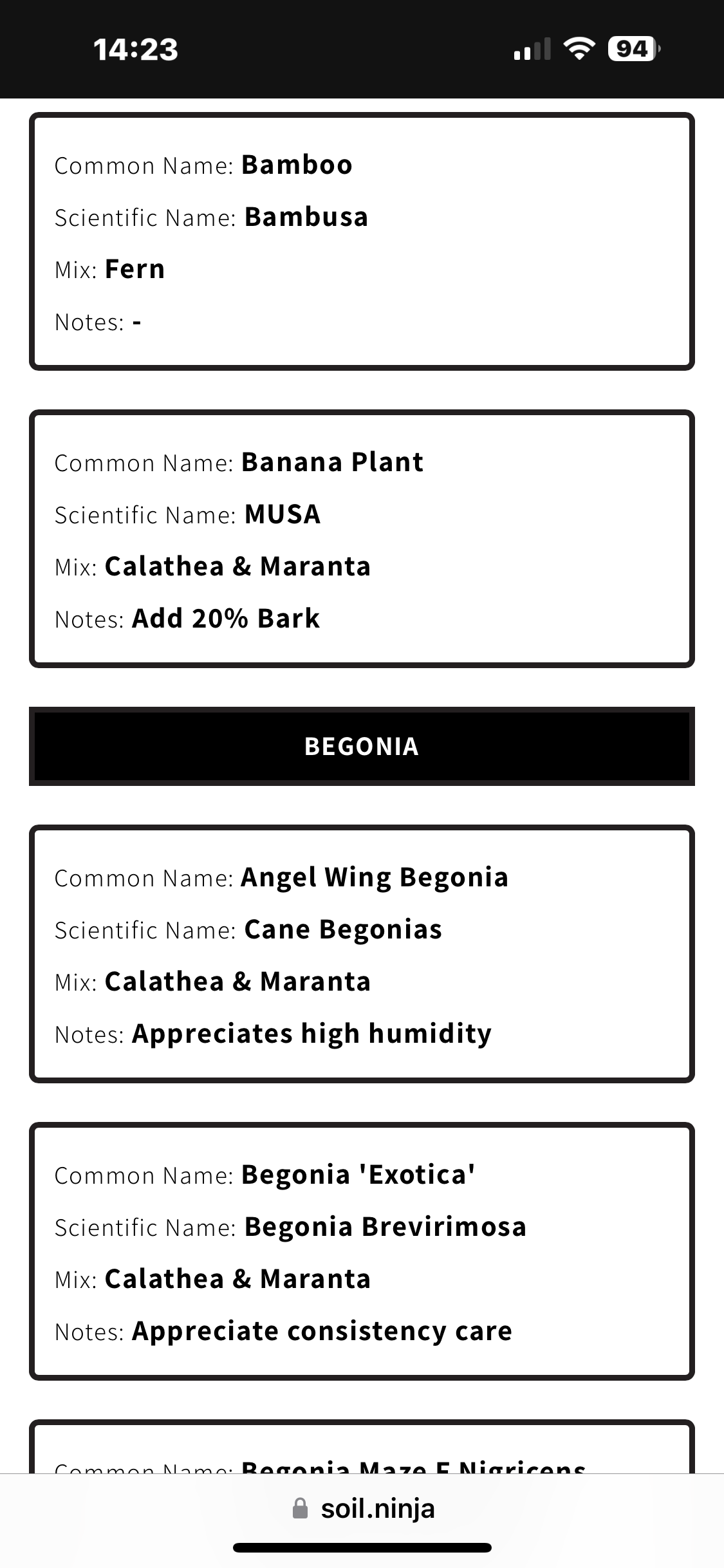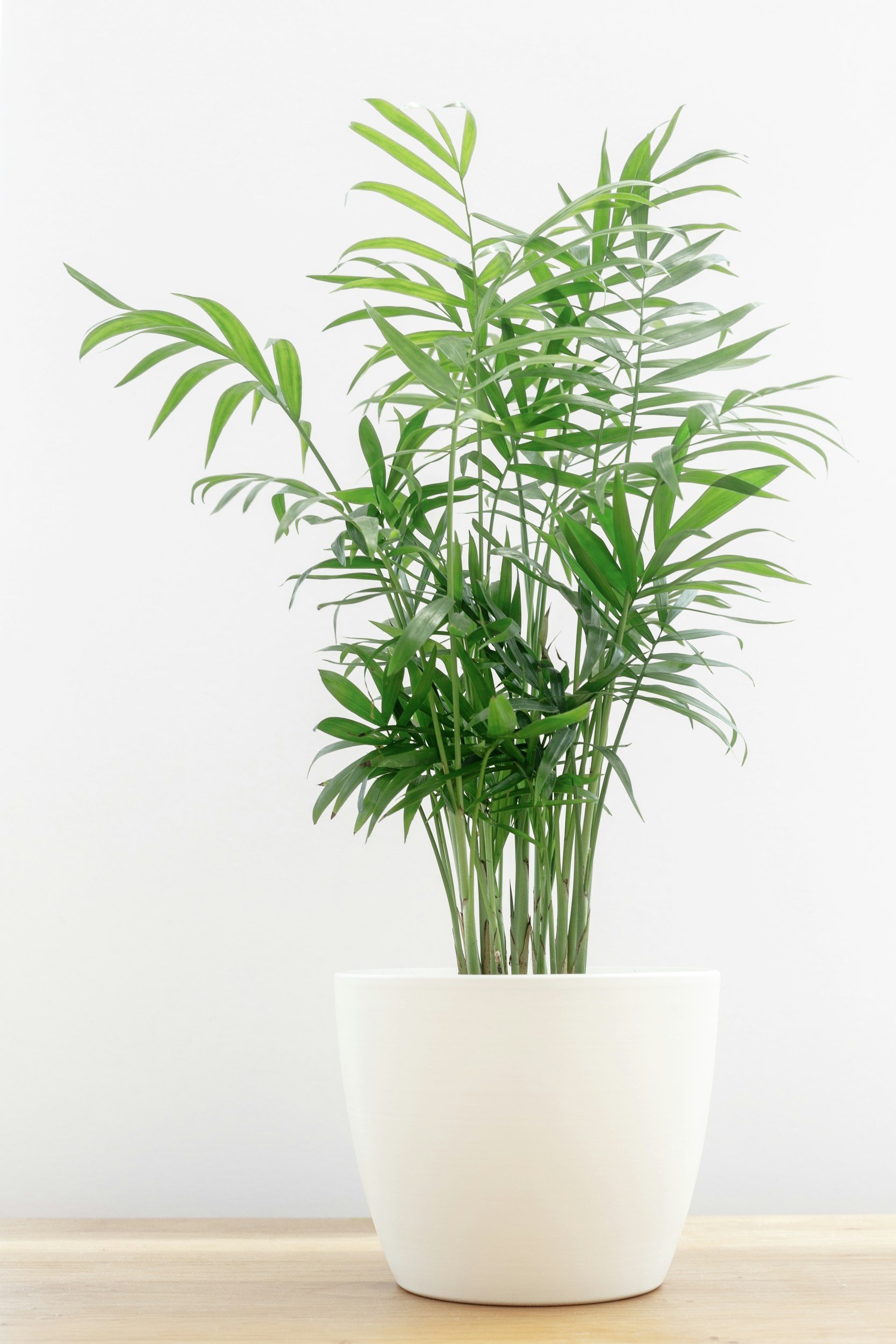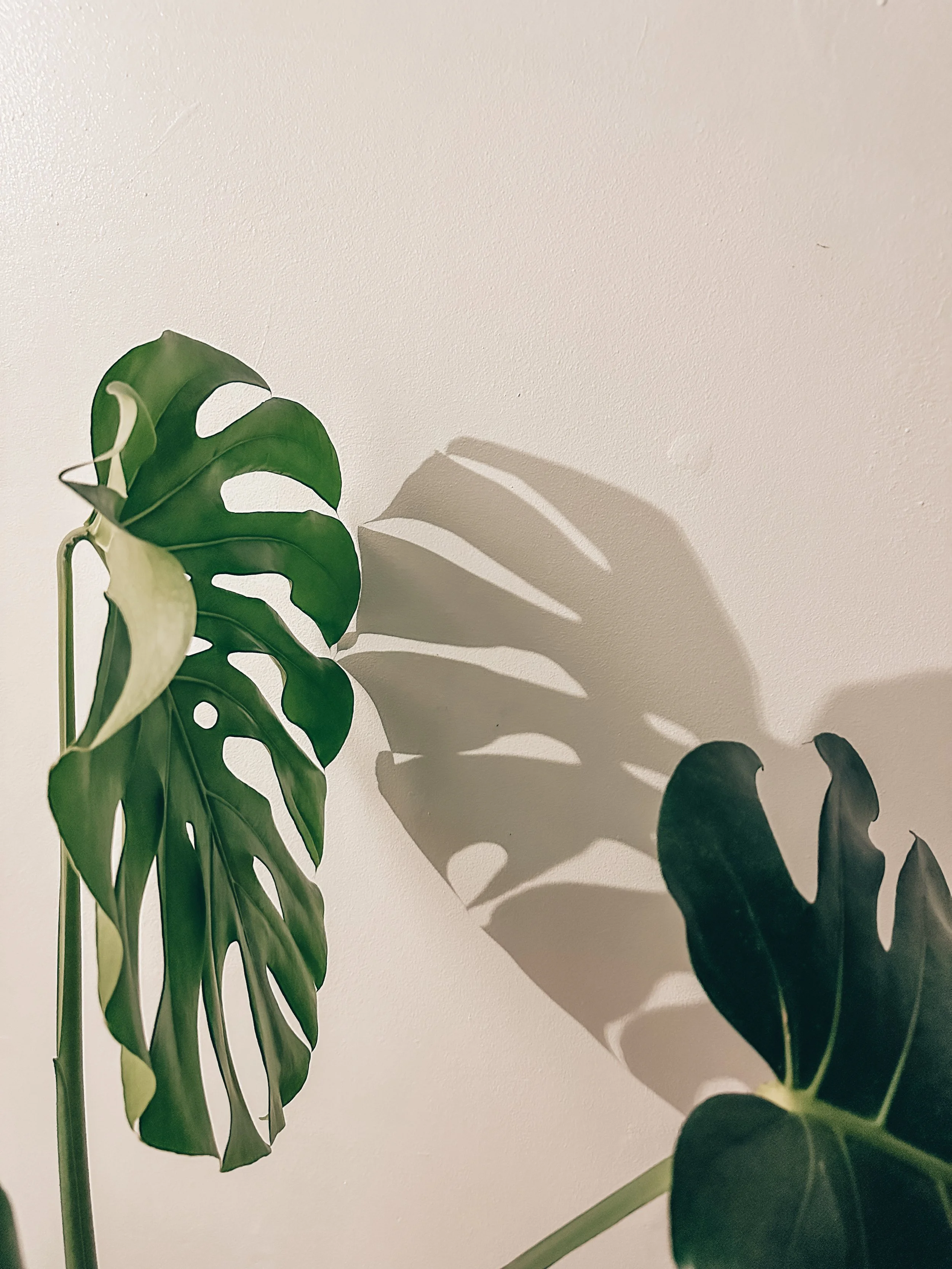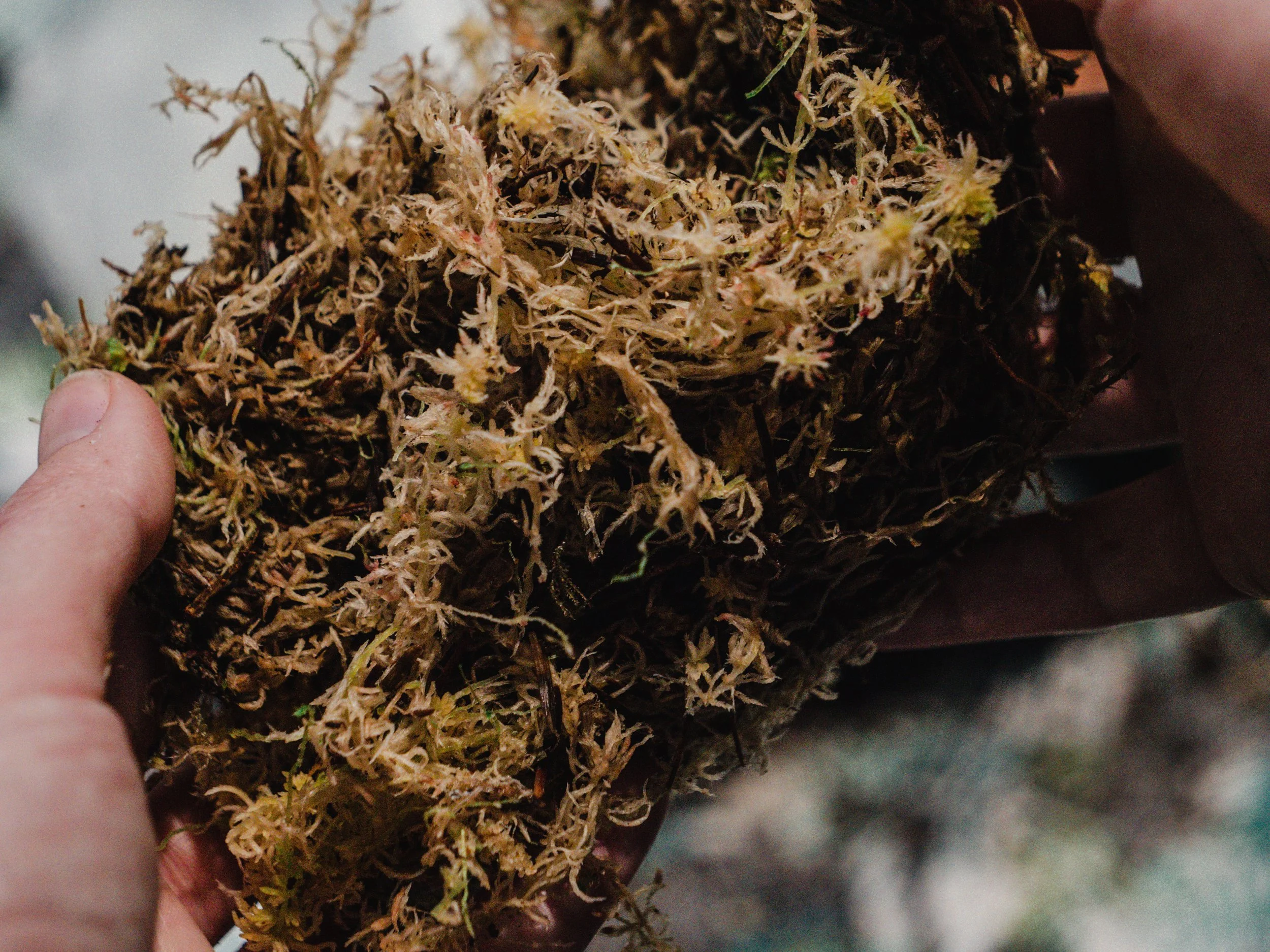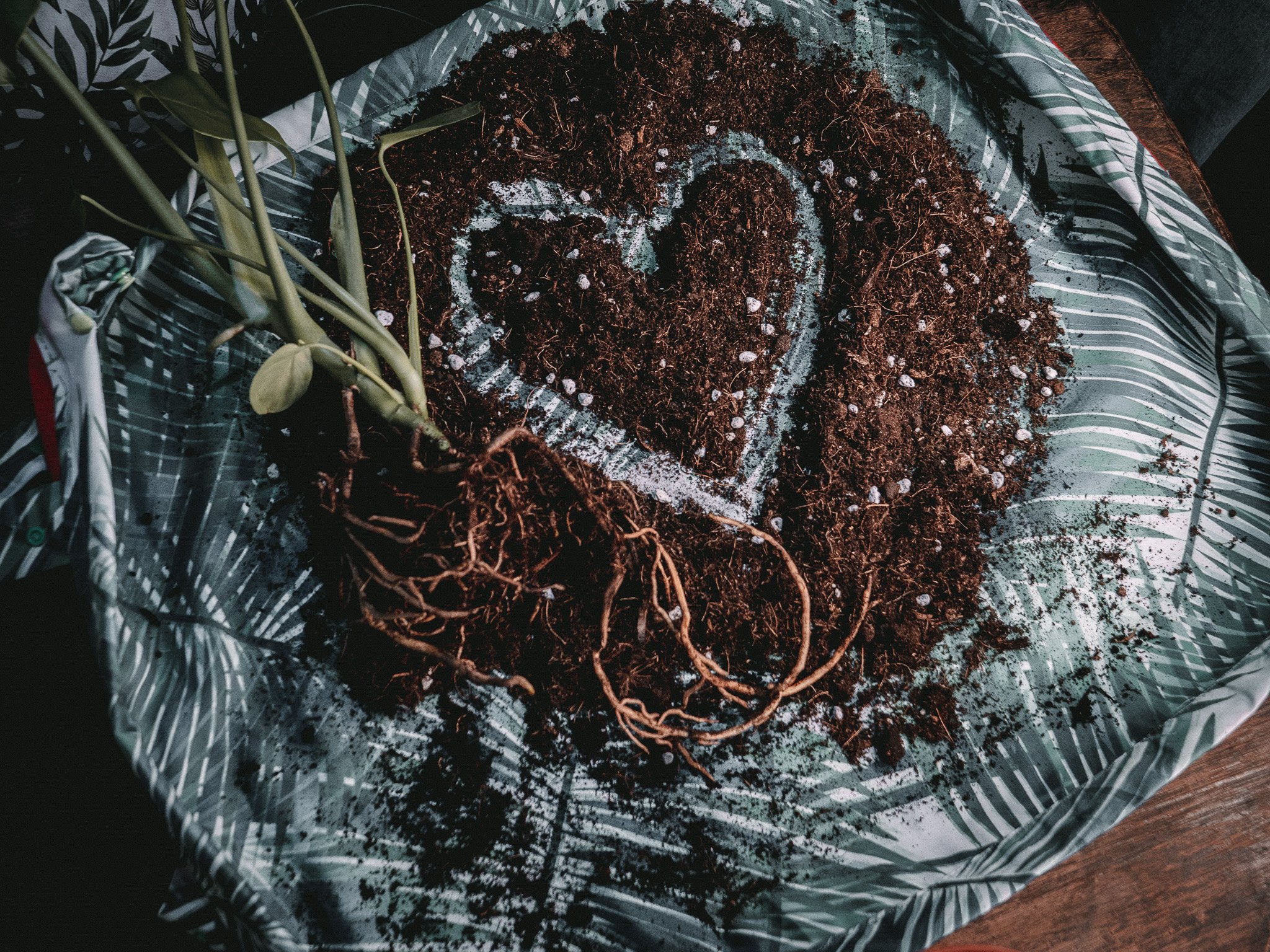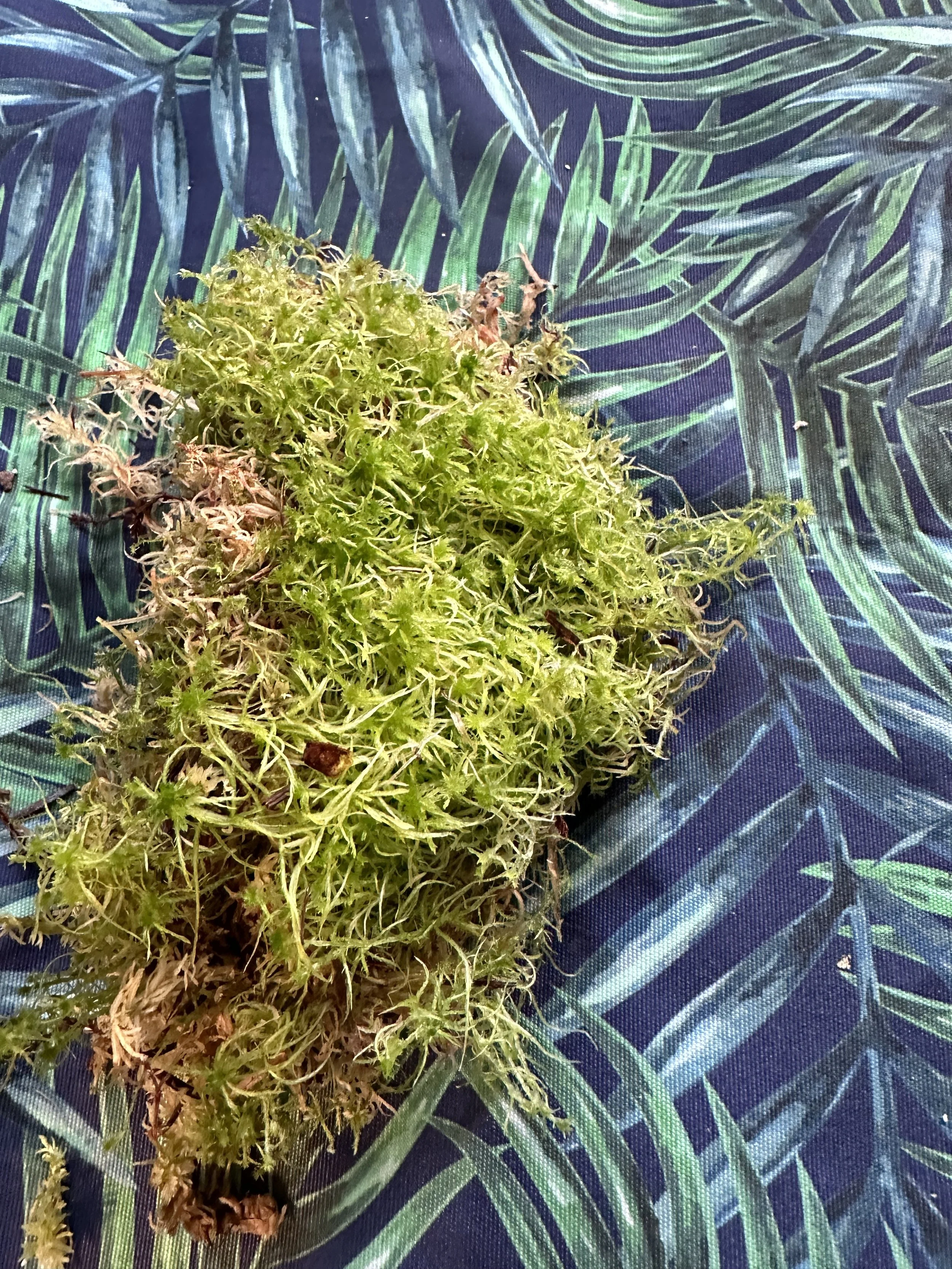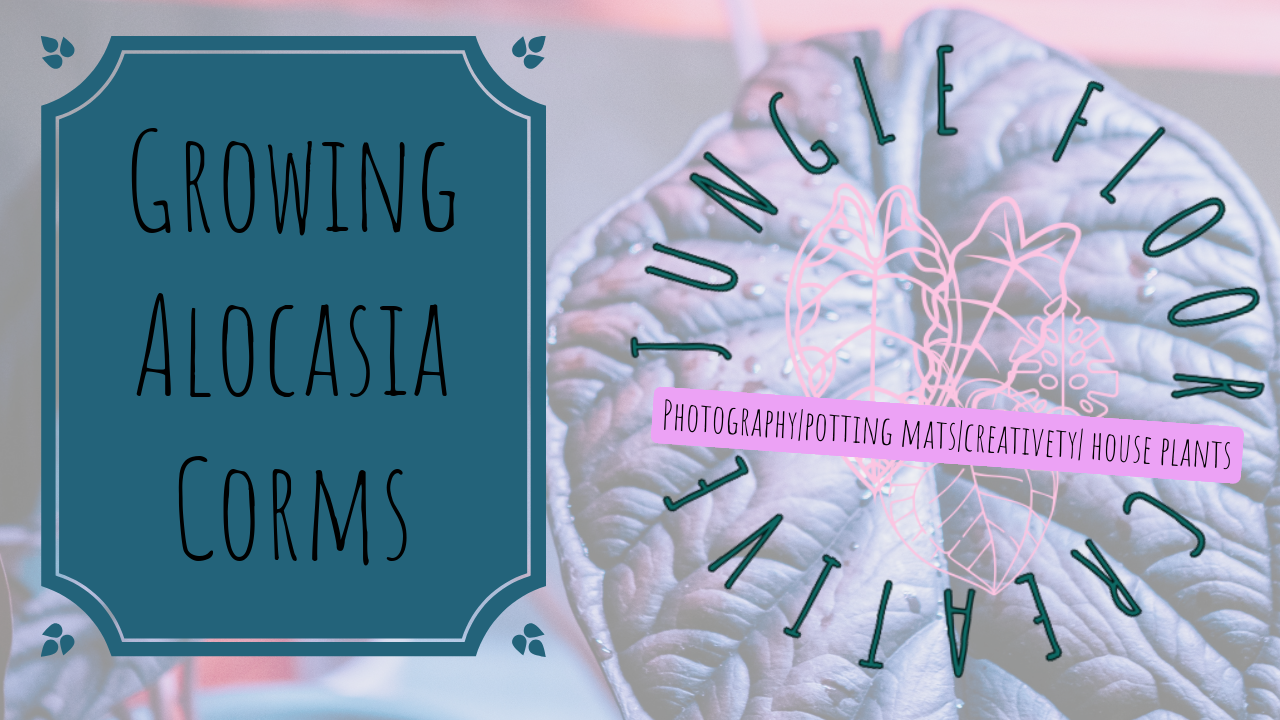Plant Support
I’ve recently been experimenting with the growth of my Rhaphidophora Tetrasperma, also known as the mini monstera. I don’t know if you’ve seen this, but it’s growing in such a cool way that makes my jungle look even more like a real jungle. The problem I’ve been having recently is trying to train it to stop attaching to my ceiling and potentially damaging itself. I often find myself wondering if I’m doing the right thing, but I must be, because it seems to be loving life!
Plants need support beyond just the regular “Come on, you’ve got this—I’m rooting for you!” Although that encouragement is great too, it’s not quite what I mean when I talk about plant support. There’s more to it than just watering them. Some plants climb, some don’t, and some have enough strength in their stems to stand upright on their own. Others trail happily downwards, and some even crawl along the soil. As a plant parent, the advice I’m giving you is to think about what support really means and how you can help your plants thrive, beyond just cheering them on.
Things to Consider Before Using Physical Support Tools:
Not every plant needs support. Some plants naturally have long stems that grow outward without needing help.
Some plants are strong enough to stand on their own and need space to move freely to receive enough light for photosynthesis.
Some plants crawl across the substrate. You can often tell by the way their stems grow sideways rather than upwards.
There’s no one-size-fits-all solution. Different plants prefer climbing on different surfaces, so it’s important to match the support to the plant’s natural growth habit.
What works for me might not work for you. Each plant has its own unique needs and growing conditions.
Support doesn’t always have to go upwards. Some plants prefer trailing or crawling, so they don’t need vertical structures.
Not all plants need to be put on poles, even if they’re sold that way in stores. For example, orchids are epiphytes, which means they naturally grow in tree canopies. They absorb moisture and nutrients directly from the air and surrounding debris. Try taking the pole away and watch them grow..
To ensure that stems are strong and resilient, it's crucial to provide holistic care for the plant and its needs. Plants store water in their stems and can lean towards light as needed. Restricting their movement can adversely affect their growth. However, when supporting a trailing or climbing plant, training the plant is often necessary. Without proper support, indoor plants might damage walls, which is an important consideration for renters. For example, I've seen aerial roots on a Monstera plant growing beneath objects in search of water.
To provide some support and training for plants, here is 5 plant support ideas.
Before I begin, I’ve decided that there’s no "right" or "wrong" way to support your plant, since every plant has its own unique growth habits. Rather than overwhelming you with endless options, I’m going to focus on the plant supports I personally use in my collection. I’ll also mention one type of support that I haven’t tried yet but am excited to experiment with—especially since I love growing orchids and ferns. So, without further ado and in no particular order, here are five methods of growth support I’ve come across as a houseplant lover.
One: cane or the trellis
I have previously used a trellis for my Scindapsus and currently use canes for my begonias, specifically the bamboo cane variety. Over the years, I’ve found both of these methods useful, though I believe bamboo canes are more environmentally friendly, especially knowing that bamboo can be grown in this country. Similar options include coir poles, plastic green poles, thin wooden poles, and the latest introduction to the plant world, the Kratiste:
"Crafted from a blend of potato starch and Elephant Grass, this support plank provides natural-looking support for houseplant climbers and viners. Its rough, textured surface not only adds to its visual appeal but also serves a practical purpose by retaining water and offering a stable structure for plants to grasp onto as they grow.”
I’m sure there are countless other types of poles you could use. I mainly use these for plants with thin stems that generally have one main stem. In the case of my Begonia, I just wanted it to start growing upwards instead of flopping onto the soil. I also have a few climbing plants that would benefit from a cane, like my Rhaphidophora tetrasperma, Cebu Blue, and Philodendron Ghost. The Kratiste could also be great for plants like Monstera Dubia and Monstera deliciosa.
Trellises can be made from strong wire bent into shape, 3D-printed, or even created out of coat hangers. You could also let your plants climb up a shelf! Keep in mind that this works well for plants like Hoya, Cebu Blue, and smaller vining Monstera varieties.
Here’s where I talk about my thoughts on these methods. I suggest reading up on how these types of plants grow naturally, as they may have different climbing habits that don’t adapt well to some supports, like a trellis. For example, orchids are often sold to us on a cane in stores, but after doing research into this genus recently, I discovered they are naturally epiphytes. They grow in the wild on tree canopies, receiving their moisture and nutrients from the air and surrounding debris. Based on this, you might find that removing the cane makes them look even prettier.
Both methods—canes and trellises—are great for providing support, but it’s important to consider how aerial roots play a role.
Imagine using bamboo sticks, wooden trellises, or even cool branches you find outside—your plants will climb them like they’re in the wild! These organic supports make it easy for your vines and creepers to latch on and grow strong.
I can recommend Squircle Trellis - 10 cm across, 1 cm thick by Mythos 3D
Two: Trailing or Letting It Climb
Some plants don’t need support and are perfectly happy trailing. For example, string varieties like String of Hearts or String of Turtles naturally trail beautifully. Another reason to let a plant trail could be that it simply prefers this growth habit. Trailing plants look amazing cascading from bookshelves or hanging in macrame hangers, adding a lush touch to any space.
That said, some plants can produce larger leaves when they’re supported as they grow. For instance, I have a Rhaphidophora tetrasperma that I’ve allowed to climb freely along my bedroom wall. It’s vining towards the window and growing across the wall, but it often needs a bit of training to prevent damage—it loves to grow toward the ceiling, resulting in leaves getting bent or torn.
Certain plants don’t require support to thrive. They might trail down naturally, or their leaves will fan out towards the light source. However, if you want to encourage climbing, you can try plant supports like moss poles or even wall-mounted options.
Three: Organic Options
There are countless ways to support climbing plants using organic materials. While some methods have already been mentioned, here are additional organic options you can try:
Kratiste plant poles, planks, and sticks
Coco coir poles
Untreated wooden planks (great for shingling plants)
D-shaped moss poles with live moss (DIY versions are popular!)
Round moss poles with live moss
Each of these methods not only supports plant growth but also enhances the aesthetic appeal of your space. Organic materials blend beautifully with plants, giving your home or garden a natural, earthy look—far better than a plastic stick or chopstick! Using organic options can feel like bringing a piece of nature indoors.
If you’re feeling adventurous, you can even go for a walk and find unique pieces of wood to repurpose as plant supports. This simple addition can be incredibly beneficial for your plant’s growth and create a truly one-of-a-kind display.
Examples of Plants Using Organic Supports
A Monstera with large, green, split leaves climbing a thick, round pole made from coconut husks.
Another Monstera with slightly smaller leaves, also supported by a coco coir pole.
A Rhaphidophora tetrasperma with curvy, split leaves climbing a white wall with the help of a bamboo stick.
A Monstera with large, veined, green, split leaves growing sturdily along a bamboo stake.
Four: 3D Printed Moss Poles.
I believe this is one of the coolest ways to help your plants grow! Of course, there are both pros and cons to using a 3D-printed pole, but there are several different methods to explore.
For plants with aerial roots, like Monstera and Philodendron, using organic climbing supports (as mentioned above) can provide many benefits. The main advantage is that it mimics the plant’s natural environment. Think of organic materials as a natural jungle gym for your climbing plants! Here’s why they’re awesome:
Why Organic Climbing Supports Are Great
1. Moisture Magic:
Using materials like moss poles or coconut fiber (coir) gives your plants an extra bonus—humidity! These materials retain moisture, creating a spa-like environment for climbing plants like Monstera and Philodendron.
2. Healthy Growth, Naturally:
Organic materials are excellent for plants to grip onto, encouraging upward growth. The better they can climb, the more light they access, resulting in larger leaves and more vibrant "jungle vibes."
3. Eco-Friendly:
Organic materials are biodegradable and much kinder to the environment compared to plastic or metal poles.
For a budget-friendly alternative, you can also find 2D net prints that convert into 3D poles, offering a cheaper solution.
Cons of This Method
Cost:
Organic moss poles or 3D-printed options can be expensive, especially if you have many climbing plants. While the 2D net options are cheaper, I haven’t personally tried them to provide detailed feedback.
Honestly, the price is my only downside when it comes to 3D-printed moss poles.
Five: Mounting Plants
Some plants, like epiphytes, naturally grow on trees and take nutrients and moisture from their surroundings. Orchids, certain fern species, and moss are great examples of epiphytes.
Definition:
An epiphyte is a plant that grows upon another plant or object for physical support without harming its host.
To cater to epiphytic plants, there are various mounting methods to choose from:
A wooden chopping board
Any block of untreated wood
3D-printed moss habitats
Driftwood
When mounting, it’s important to consider the plant’s specific care needs and humidity levels to ensure a healthy environment.
I hope you found this blog helpful and inspiring! If you have other creative ideas or methods to support your plants and help them thrive, please share your experiences and suggestions in the comments below.
Images Moss Habitats mounts, black trellis and yellow D-shaped moss pole by Mythos 3Design and the rest Jungle Floor Creative
Soil and Componenets
Discover soil and the many components you can use and understand why there my favourite components.
I often hear people discussing their preferred methods of plant propagation and growing techniques. For me, I discovered the Soil Ninja soil method about three years ago. Previously, I had been using Westland House plant Mix, not realising that it was not the best option for my plants. The Westland mix contained mostly peat compost, which caused the soil to retain too much water or not enough. Also when I started collecting for real alot of House plant composts were only just changing the peat free. Because Peat or having just coco coir lead me to frequently over watering my house plants or not watering them sooner at they would dry out to quickly. Which was not making it easy to look after plants like Maranta, Alocasia, and Begonia that can't tolerate drying out. That's when I discovered Soil Ninja. They taught me to research where the plant is from and not rely solely on the tag's instructions, which they often say same, thing: bright spot, water once a week.
I started looking at various plant types and realised Soil Ninja didn't have a mix for each plant, but they did have a plant index which was helpful.
The list of plants on the index is impressive and helps to understand the best soil mix for your house plant Genus or species. Over the years, they have put in a lot of work to adapt to the soil quality they naturally grows in. I would highly recomend checking this plant index out to help you understand the soil that you plant needs.
By mimicking the environment of our house plants, we can help them adjust to growing in an environment that is vastly different from their natural habitat. However, it's important to note that my advice and understanding come from a UK grower's perspective in the Fens, a very humid part of the UK that can get cold during the winter. If you live anywhere else, please keep in mind that my advice may not apply to your specific location. I would like you to consider whilst reading this is your house might be old like my house was in Cambridge and it was either so cold or super hot. Everyone has there own plant environment and this is something for you to consider before continue to read this blog. I have used my own UK grower experience as well as knowledge and research from others.
Whilst researching for this blog, I decided to introduce myself to the environment in my back garden and the environment of different soils around me exploring what I observe from that sample and checking on the PH of the soil also. The way I did this was using my potting mat I took a few different Samples. First Sample I took was the soil in my back garden. Firstly I took note that it was very grainy and fully of stones and rubble. It appeared to have the texture of clay when wet. I tested the PH of this soil concluding that it was very Alkaline and would struggle to retain moisture. I noticed this over the next few days with the rain and even a few days of rain it didn’t look like the soil had be wet previously.
A cactus enjoys one big watering every now and then and no water during the winter, as it gets too cold for the cactus to actively grow unless you can replicate its ideal environment. Many cacti come from dry environments with soil that is often made of sand, silt, and porous stones like pumice. They tend to prefer soil that is neutral to slightly alkaline in pH. I decided to measure a cactus mix myself to add to this understanding. I discovered the Soil Ninja Cactus mix to be more alkaline, with a pH of 9.0. This is likely due to sodium content, which makes the soil dry out easily.
The recommendation for your plant mix will be very different depending on the natural environment your plant would normally grow in. Lets Explore a few examples of plants and there environment.
Alocasia
Plants grow predominantly in primary and secondary forests, early regrowth areas, open swamps, on the forest floor, in leaf litter, and sometimes in humus deposits on rocks. They are usually found in lowlands, in ever-wet conditions, and in deep shade. Focus in on the Alocasia Zebrina which grows naturally in the Philippines which has generally two seasons wet or dry, soil would be peaty and wet.* Volcanic Ash may likely be present, meaning the soil would very fertile, retaining a large amount of moisture. Philippines is a place of lots of little islands this will make for a very humid environment with low land rain forests and
Chamaedorea elegans Aka Parlour Palm
Plants like the Chamaedorea elegans, also known as the Parlour Palm, grow natively in Southern Mexico and Guatemala. These regions have high humidity, thin soils, and volcanic activity, resulting in very fertile and stony soils with limestone. This is due to the prevalence of steep slopes and deforestation. By exploring this information, you can understand the type of soil suitable for this plant. Volcanic soils can range from very acidic to neutral, and they are likely to hold a lot of water while still allowing air to flow to the roots. some of these plants may be closer to the ocean with water on both sides and sandy beaches.
Monstera Deliciosa
In its native habitat, it can reach 20 m as it climbs up trees, by means of aerial roots, in search of light. The aerial roots hang down like curtains from thick, fibrous stems. * Because these plants are set to climb this would mean that they like the humdity but don’t mind drying out. I’ve explored and research the soil they like best would be well draining as they climb. A lot of places they naturally grow well can Be sandy soil and are consider if in the shade can deal with lack of water every so often.
Here in these photos I was Exploring different soil types in the hopes to help you understand the research I have done personally in writing this blog. I explored Cacti Soil, Garden Soil. Standard Compost, Alocasia mix that I had made they need to be mixed with water so i could measure the ph of the soil and Show you the composition for the soil. (Photos include the Philodendron Potting Mat).
So lets Talk Soil! Top Five Components.
Vermiculite
Wet Vermiculite
I love using Vermiculite its a great product that holds a lot of moisture great for getting seedlings growing. Soil Ninja says ‘The small, brightly coloured component will expand with moisture in what can only be described as an 'accordion' fashion. It's small movements in a soil blend help with aeration but above all else, this fabulous material maintains moisture for extended periods of time! Slowly releasing water and nutrients back into the soil - even days after it was watered.’* its another one of those versatile components I honestly love adding to my Alocasia mix if I’m creating my own of course. I also find its great for growing corms in to and I often use it as a lower layer in my prop box as it holds so much water. I found it to be useful in many parts of being a house plant lover.
Fine Bark
Fine Bark is a great addition to a aroid mix not only does is smell line a pine forest it also its a great for orchids to. Holds moisture and releases Nutrients into the substrate mixes. ‘Bark is a brilliant medium for inoculated mycorrhiza! The slightly acidity balance is the perfect colonisation ground for them to aid your plants with up-taking macro nutrients and out competing bad fungi!’*
Activated Charcoal
Has the ability to clear out impurities and bad bacteria, to hold moisture allowing air flow in the Substrate mix. Keeps the roots free of rot. Can balance out the ph in a largely alkaline soil. Great for a drainage layer and it provides air to move around the roots.
Zeolite
I love this component so much and its one that totally blows my mind.. it changes colour when wet. (picture left) Its porous component with properties to transform the soil mix to prevent rotten roots. Making sure that the roots are gaining the water and nutrients the plant needs without overloading the plant. This component slowly releases the nutrients to the plants roots over time keeping the Ph balanced.
Cactus soil with grit, pumice, clay, shells, sand, coco coir and activated Charcoal.
Sphagnum Moss
Fresh is best !
I want start by saying that without a doubt I prefer fresh Sphagnum Moss, this is because when I use fresh moss I’ve found its less likely to Deteriorate, go mouldy and is Resilient if it starts to dry out. It bonces back with a quick water. This substrate is great for propagation of your baby plants or in you moss poles. Orchids, Anthuriums and Alocasia love it as part of there substrate. If I am mixing it in soil sometimes prefer rehydrated works better for those Carnivorous plants. Sphagnum Moss is said to hold 20 times its weight in water. The Fresh moss is full of great microscopic plants and animals. ‘Sphagnum mosses grow from spores which are produced in fruiting bodies called capsules. When the spores are ripe, pressure builds up in the capsule until its lid is blown off, sending the spores shooting into the air.’* This fantastic substrate is great for walls in you terrariums for increasing Humidity and helping your plants to get water from the moss pole as it climbs. In this component its full of friendly microorganisms. That can benfit the plant in many different ways.
When repotting you plants heres a couple of things to consider:
What type of house plant is it look at how it grows Naturally does it look like it climbs or trails?
Before bringing home take a picture on the google app to see where the plant originally comes from.
Do not use soil from outside with your house plants as this can be very Alkaline and the Compost mixes can be to rich and hold to much moisture.
When repotting check for plugs around the base of the plant as these can often restrict growth. and store up to much water causing root rot.
Many people, including myself, often make the mistake of using pots that are too big or repotting plants too soon. Most houseplants like to be snug in their pots. Just because you want your plant to grow bigger doesn’t mean a larger pot will help.
Don’t just take my word for it or any influencers its so worth doing your own research. As well as learning from other peoples experiences.
This was the early days of Soil Ninja !! now they have these super awesome resealable bags that you can reuse and recycle. This photo was also taken before I created Jungle Floor Pottings Mats.
If you would like to know more about my recommendations on Soil Ninja check out my blog. You will Also find some if not all the Components mentioned in this blog on Soil Ninja’s Website link below. I included some of the places I gain research whether this was through citation or direct quotes and further reading is below.
Citations and Research resources:
Recommended Components: https://www.soil.ninja/collections/soil-components
Cited 22/4/24 https://www.sciencedirect.com/science/article/abs/pii/S014019632030224X , Soil attributes and the quality and yield of ‘Gigante’ cactus pear in agroecosystems of the semiarid region of Bahia, Matos, Laudiceio Viana, Donato, Sérgio Luiz Rodrigues, Kondo, Marcos Koiti, Lani, João Luiz , Aspiazú, Ignacio, 22 September 2020.
Cited 23.4.24 https://www.aroidpedia.com/alocasia, HABITAT: SUBSTRATE:,
Hernandez, Carolina G. , Cullinane, Michael and Borlaza, Gregorio C.. "Philippines". Encyclopedia Britannica, 1 Aug. 2024, https://www.britannica.com/place/Philippines. Accessed 1 August 2024.
Soil Ninja, 15th October Understanding Activated Charcoal, https://www.soil.ninja/blogs/dojo/activated-charcoal Cited 17/06/2024
Horst, Oscar H. , Stansifer, Charles L. , Anderson, Thomas P. and Griffith, William J.. "Guatemala". Encyclopedia Britannica, 31 Jul. 2024, https://www.britannica.com/place/Guatemala. Accessed 1 August 2024.
M. Nanzyo, S. Shoji, R. Dahlgren, Chapter 7 Physical Characteristics of Volcanic Ash Soils, Editor(s): Sadao Shoji, Masami Nanzyo, Randy Dahlgren, Developments in Soil Science, Elsevier, Volume 21, 1993, Pages 189-207
MONSTERA GROWING IN THE FLORIDA HOME LANDSCAPE, Jonathan H. Crane, January 7, 2020, https://edis.ifas.ufl.edu/publication/HS311, Cited 06/08/24
Quotes
* Soil.Ninja understanding Vermiculite, written 15th October 2021, Quoted 17/6/2024, https://www.soil.ninja/blogs/dojo/vermiculite
* Soil Ninja Understanding Bark, Written October 2021, Quoted 17/6/2024, https://www.soil.ninja/blogs/dojo/bark
*Irish Peatland Conservation Council, Sphagnum Moss , Action for Bogs and Wildlife in Ireland, Quoted 31/07/24, https://www.ipcc.ie/a-to-z-peatlands/sphagnum-moss-the-bog-builder/#:~:text=Sphagnum%20mosses%20can%20hold%20up,their%20own%20weight%20in%20water.
BRAHMS Online Copyright © 1985 - 2024 Department of Biology, University of Oxford Monstera deliciosa Liebm. (Araceae), Oxford University 100 plants, Quoted: 06/08/24
A potting Mat!
What is a Potting Mat you ask? let me explain, a potting mat is….
Being a big houseplant lover, I always imagine re potting plants is like a day at the beach, with sand sticking everywhere. Picture having soil in your ears or underwear. The worst is finding soil in bed or stuck on your knees. Regardless of what day of the week it is we often find soil or semi hydro turn up in the most frustrating places. What if I could tell you theres other ways we can reduce the mess either clean up there and then or lump it! There is another way! I often find when I repot late at night or at a weird time I rush my repot and don’t really feel like cleaning up my mess. I suffer go to bed and wake up with Sphagnum moss stuck to my cheek.
Mental pictures Aside in this blog I will be taking you through the phrase a ‘Potting Mat’ I will inform you of a few different methods that I have seen looking at the pros and cons to each one and helping you to discover some of the best methods to a quick and easy repot. I will end this blog and talk about what is the product a potting mat what this means for the regular house plant lover =.
Where or what is a repotting surface on the table or the floor and even heard of people repotting on there bed, to which I am guilty. Soil and substrates can get anywhere as I’ve talked about above and your repotting surface is the place in which you choose to repot your plants. However, after the re potting session your often left with a mess on the floor to clean up and sometimes this can be on the carpet meaning it gets crushed into the floor and children and pets, walking into the room dragging mess across the floor and sometimes as you are repotting the substrate might bounce and get on to a little ones hands as they are crawling around.
What Is A Potting Mat:
This is where a potting mat comes in, a potting mat can be anything that helps you contain the soil and substrate mess during the process of repotting, making moss poles boxing up propgations or opening new plants. It enables you to collect the mess in one space, preventing it from spreading. It helps protect your table or floor from being ruined and discoloured every time you choose to repot your plants. Additionally, you might find it allows you to water your plants straight after repotting.
Often, you may have a repotting table if you’re lucky enough to own one, which can help, but you will eventually need to clean up. Wet soil has the potential to slowly ruin your carpets, nice dining room table, and floor color. If you rent or have non-plant-loving housemates, they probably won't be happy with plants in the shower or soil in their sock drawer. A potting mat helps prevent the worst of these things and makes for a simpler clean-up.
However, you don’t need to go out of your way to buy a potting mat if you can’t afford it. There are plenty of other cheaper or free ways to create a potting mat yourself.
end of part 1
What can I Reuse or re purpose as a potting mat?
You can save a lot of money by repotting on the floor of your own space and no one minds. Ensure you have tools like a vacuum and broom to clean up. Use a soil calculator to determine how much soil you need. Avoid carpet when watering plants. A hard floor or the patio outside is a convenient spot as it can be easily cleaned afterward.
Downsides of using the floor for repotting:
Mess is hard to control when repotting in bulk.
Cleaning cannot be delayed.
Risk of upsetting housemates or staining the floor.
Cleaning up may be tough and it is not very comfortable for repotting.
Soil may get tracked around by people or animals entering the room.
Accidents happen...
2. Using the table or a counter surface is great Re potting mat, as you can push the mess straight into the bin afterwards, that is if you have access to your bin that way. Having counter top or table to repot some people are lucky enough to own a repotting table at least you can leave it there and sit in comfort to repot. But similar to the idea above it its harder to contain that mess. I was discussing this idea with my friends at mythos3design and They mention that after the many times repoting on there dinning room table without protecting the surface with anything. Mentioning that it can not be good from the surface of that table. A big con to this is not realising that you potentially made a puddle of soil on the floor.
Mythos Design
Foam Board
3. One of the ideas presented to me was the idea of using a newspaper as a potting mat. Truth be told, I could see this being a really good idea for a potting mat. @Jess.aplant shared this in a recent reel, as you can see, using a piece of newspaper for such a small plant. If you have a newspaper to hand, it's the perfect quick potting mat.
Pros:
Often readily available.
You can use a piece of scrap paper or cardboard.
Easy to fold up and throw away.
It doesn’t have to be an actual newspaper.
Cons:
Only useful for smaller plants.
If you want to water after repotting, you would still need a tray.
Limited use, only beneficial for smaller plants.
You could use a few pages, but you would still need to be very meticulous about repotting.
Influencer and Helpers for this blog are as follows
images by: plantas.with.noraiza jess.aplant rrrosiki mythos3design houseplant_addiction_
comments and ideas inspired by: an_english_jungle
Thanks for your help ! please comment below if you have some more examples of preventing that re potting mess
Containing the Mess
Mess Happens
Mess will happen, whether it's physical or in life. Take a deep breath to begin again. There's no perfect way; just remember it's fine look after number one!
POTING Mat
A Potting mat could be anything you want to use to contain the mess! Lets discover some tried and tested methods! When dealing with Re potting House Plants. Including introducing other plant lovers peoples methods. Lets have a look of different items serious and funny ways you can use to repot on and please comment below if you have any ideas and tricks that have worked for you in the past. I’m gonna list them here some options and if you read further down the blog I will write some pros and cons to what benefits and hinders this particular mat.
The floor indoors
Take the repotting outside
A Newspaper, cardboard box or foam.
Repot over substrate box or bag.
Big Towel
lid of a plastic storage box
shallow garden tray
Big piece of Tarp
kitchen sink
A Potting Mat
4. Another way of creating a potting mat is to repot over the container or bag that the substrate comes in sometimes I do this where I put a pot into the substrate bag and fill the the up with substrate. This is great fast method but its often when you only need to repot the one plant and its not a great way to if your changing a substrate like moving to semi hydro and its still so easier to just still make a mess. So it has similar downsides to using the floor or a table top surface.
I’m going to put five, six, seven, and eight together in this pros and cons list. Repot on a plastic container or lid, a blanket, an old towel, a shallow garden tray, or a big piece of tarp. I think I’ve done all of these in the early days when I started collecting indoor plants. Originally, I used to take them outside; however, that meant the likelihood of the weather being okay or the threat of pests being higher. I started to realize that it was better to repot house plants indoors rather than outdoors. I used a massive old metal whiteboard at one point. Each of these similar methods is great because they are waterproof, easy to get hold of, and the substrates are more contained, resulting in less mess. Some of them if flat enough can be put away easily. Waterproof and easily cleaned
However,
They can be bulky or to small.
The substrate gets stuck on them easily like in the fibres of the old towel, the corners of the box
Bigger containers you can make more mess. Small ones are easier to clean but don’t container the mess as well.
Storage is hard with large containers.
Often this is can provide you with better cleaning if you use the same thing everytime.
Lastly You can using a potting mat its self:
Pros to using a repotting mat:
There are often a variety of options available at different price ranges.
They should be quite compact and waterproof.
Easy to clean, or it is possible to leave the mess overnight if needed.
Jungle Floor Creative Potting Mats:
You can water your plants on the repotting mats.
They are also compact. I made the potting mats I sell compact, either rolled or folded flat.
They are made by a small business and are bespoke, with great 99% waterproofing.
I have a range of designs that are considered quite larger than I’ve seen.
Super easy to clean and can be hung up to dry.
Sides make it easy to collect substrate off the Potting mat.
Cons to having a potting mat:
They cost more money than some of the other methods mentioned here.
They can take up extra space compared to other methods.
Some might not be as robust as others.
guess thats just it and if you would like to purchase a potting mat from me. Send me a comment and i’ll even give you a discount for reading my latest blog! go to the potting mat shop to find out more info. For notification for each blog and deals, sales and giveaways sign up to my news letter.
Growing from Alocasia Corms.
Come watch my method tried and tested something that works really well for me and my alocasia corms see what you think I'm not a plant professional I just try and test my methods adapted from others. This works really well for me and I just wanted to share it with you. Highly Recommend items you will need For the corm prop method Paper Towel (not toilet roll), Jungle Floor Mat from junglefloor.co.uk, a clear plastic container with a lid, a small thin stick, pot just tiny bit bigger than the root bulb to repot the plant in. You can find the Alocasia Soil Ninja Mix, Soil Ninja Sphagnum moss I used on this website: https://www.soil.ninja/ Liquid gold leaf can be found on: https://www.soil.ninja/collections/accessories any questions comment below or message me on my website. Adobe rush stock music.

































